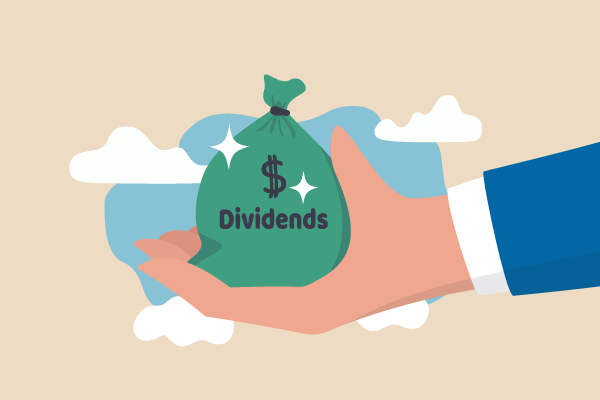When it comes to investing in stocks, there are many different strategies that investors can employ.
One popular approach is to focus on dividend-paying stocks. These stocks are known for providing a steady stream of income to investors, making them particularly attractive to those who are looking for a reliable source of passive income.
However, in order to make smart investment decisions, it’s important to be able to determine the fair value of a dividend stock.
We’ll explore some of the key factors to consider when trying to determine the value.
Table of Contents
Dividend Discount Model
Let’s understand what is DDM model first. The Dividend Discount Model (DDM) is a widely used method for estimating the fair value of a dividend stock. The DDM assumes that the intrinsic value of a stock is equal to the present value of its future dividend payments, discounted back to the present day using a required rate of return.
The DDM is based on the idea that investors buy stocks primarily for the dividends they receive, rather than for capital appreciation.
To use the DDM to estimate the actual value of a dividend stock, investors need to make some assumptions about future dividend payments. One common approach is to assume that the company will maintain its current dividend payout ratio and grow its dividends at a constant rate in perpetuity.
The constant growth rate is typically assumed to be equal to the company’s expected long-term growth rate, which is based on factors such as the company’s industry, competitive position, and future growth prospects.

The required rate of return is another key input in the DDM. Rate of return represents the minimum return that an investor would require to invest in the stock.
The required rate of return is based on the risk-free rate of return, which is typically the yield on government bonds, plus a risk premium that reflects the additional risk associated with investing in stocks.
Once the assumptions for future dividends and the required rate of return have been made, the DDM can be used to estimate the fair value of the stock.
The formula for the DDM is:
Fair value of stock = Dividend per share / (Required rate of return – Dividend growth rate)
The fair value of the stock is calculated as the present value of all future dividends, discounted back to the present day using the required rate of return. If the fair value of the stock calculated using the DDM is higher than the current market price, the stock may be undervalued and may be a good investment opportunity.
Conversely, if the fair value of the stock is lower than the current market price, the stock may be overvalued and may not be a good investment opportunity.
Keep in mind that the DDM is based on a number of assumptions and is not always accurate in estimating the fair value of a stock.
Changes in the company’s dividend policy or future growth prospects can significantly impact the fair value of the stock calculated using the DDM.
The DDM may not be appropriate for companies that do not have a consistent history of paying dividends or for companies that are expected to pay out a large one-time dividend in the near future.
Look at the Dividend Yield
When it comes to evaluating the dividend yield of a stock, it’s important to remember that a high dividend yield is not always a good thing. A high yield may indicate that the stock price has fallen significantly, which could be a sign of trouble for the company. It’s important to look beyond just the number and consider the context in which the dividend yield is being offered.
One key factor to consider is whether the company is generating enough cash flow to support its dividend payments. Companies that pay out more in dividends than they generate in cash flow may be forced to cut their dividend in the future, which can lead to a significant drop in the stock price.
When evaluating the sustainability of a dividend yield, look at the company’s cash flow statement to see how much cash it is generating from its operations.

Another important factor to consider is the company’s history of dividend payments. Companies that have a long track record of consistently increasing their dividends are generally considered to be more reliable and stable investments.
Look at the company’s dividend payment history to see if there have been any cuts or suspensions in the past, and consider the reasons behind those decisions.
It’s also worth noting that dividend yields can vary significantly between industries. For example, utility companies and real estate investment trusts (REITs) are often known for offering high dividend yields, while technology companies may offer lower yields.
When comparing dividend yields across different companies, it’s important to keep industry norms in mind.
Evaluate the Company’s Financial Health
When evaluating a dividend stock, it’s crucial to analyze the company’s overall financial health to assess its ability to maintain its dividend payments.
Here are some key metrics to look at:
Revenue Growth
A company that is experiencing steady revenue growth over time is generally considered to be in a strong financial position. This growth indicates that the company is successfully expanding its customer base and increasing its market share, which can lead to increased profitability over the long term.
Profit Margins
A company’s profit margin measures the amount of revenue that is left over after deducting expenses. A company with a high-profit margin indicates that it is able to generate more profit from its sales, which can provide more financial stability to maintain its dividend payments.
Debt Levels
A company that has high levels of debt may struggle to maintain its dividend payments if it experiences a downturn in its business.
It’s important to evaluate the company’s debt-to-equity ratio to see if it has a manageable level of debt. A company with a high level of debt may face higher interest expenses, which could impact its profitability.
Competitive Position
It’s important to consider the company’s competitive position within its industry. A company that operates in a highly competitive market may face challenges in maintaining its market share and profitability over time. Companies with a strong competitive position may have more sustainable dividend payments.
Regulatory Risks
Some industries are subject to regulatory risks, which can impact a company’s financial performance. For example, companies in the healthcare or energy industries may be subject to changes in government regulations that could impact their profitability.
It’s important to consider any regulatory risks that may affect the company’s ability to maintain its dividend payments.
Consider the Company’s Dividend Policy
When evaluating a dividend stock, it’s important to consider the company’s dividend policy, which refers to the approach a company takes when paying out dividends to its shareholders.
The dividend policy can provide insight into how the company views its cash flow, growth prospects, and overall financial health.
Here are some key factors to consider when evaluating a company’s dividend policy:
Dividend History
Look at the company’s dividend payment history to understand its dividend policy. Has the company consistently paid dividends over time? Has it increased its dividend payments each year?
Or has it been inconsistent with its dividend payments, perhaps skipping payments or cutting dividends during difficult times?
Payout Ratio
The dividend payout ratio measures the percentage of earnings that a company pays out as dividends to shareholders. A company that consistently pays out a high percentage of its earnings as dividends may have less cash available for other investments or growth opportunities.
On the other hand, a company that maintains a lower payout ratio may have more cash available to invest in its business.
Future Plans
Consider the company’s plans for future dividend payments. Does it plan to increase its dividend each year, and if so, by how much? Or does it plan to maintain a steady dividend payout ratio?

Consider the company’s plans for future growth and investment opportunities. Will the company need to retain more of its earnings to fund future growth, or will it have excess cash available to pay out as dividends?
Special Dividends
Some companies may pay out special dividends in addition to their regular dividend payments. Special dividends are one-time payments that are typically paid out when a company has excess cash available. While special dividends can be attractive to investors, they may not be sustainable over the long term.
Compare the Stock to its Peers
When evaluating the fair value of a dividend stock, it’s important to compare the stock to its peers in the same industry.
Here are some factors to consider when comparing dividend stocks to their peers:
Dividend Yield
Compare the dividend yield of the stock to those of its peers. A high dividend yield relative to its peers may indicate that the stock is undervalued, or it may be a warning sign that the company’s dividend may be unsustainable.
Financial Performance
Compare the company’s financial performance to that of its peers. Look at key metrics such as revenue growth, profit margins, and debt levels. A company that is outperforming its peers may be able to sustain its dividend payments over the long term.
Dividend Policy
Compare the company’s dividend policy to those of its peers. Consider factors such as the dividend payout ratio, dividend growth history, and plans for future dividend payments.

A company that has a more generous dividend policy than its peers may be overvalued, while a company with a more conservative dividend policy may be undervalued.
Competitive Position
Consider the company’s competitive position within its industry. A company that is a leader in its industry may be able to sustain its dividend payments over the long term, while a company that is struggling to compete may have a more uncertain future.
Conclusion
Investing in dividend-paying stocks can be a great way to generate passive income. However, it’s important to be able to evaluate the fair value of a dividend stock before investing.
By considering factors such as the dividend yield, the company’s financial health, its dividend policy, and its peers, you can make more informed investment decisions and increase your chances of success in the stock market.
